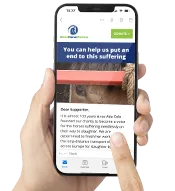Project takes first step towards lightening the load for horses
Last week (4 – 8 September) researchers have taken the first step towards tackling the issue of rider weight, investigating whether there are any short term measurable differences when horses are ridden by different sized riders.
Posted on 15/09/2017

The aim of the whole project is to develop evidence-based guidelines as to what constitutes excessive rider size under different circumstances, for the equine industry to put into action and prevent needless suffering and injury.
Over recent years there has been considerable controversy about rider weight in relation to horse size. Following the Saddle Research Trust Workshop in 2014 and a meeting of British industry representatives in 2015, an initiative was set up, coordinated by the British Equestrian Federation and World Horse Welfare, to raise funds to support research into this topic.
As a result, a pilot study has been performed using six horses and four riders. The riders all rode to a reasonable standard, but differed in body weight (light, moderate, heavy and very heavy). Each rider rode each horse, in a randomised order, and performed a standardised 30-minute exercise protocol that consisted mainly of trot and canter. The horses were ridden in their usual tack. Researchers monitored gait subjectively and objectively, behaviour, forces under the saddle, alterations in back dimensions in response to exercise, heart and respiratory rates and salivary cortisol levels. Horses were also assessed the response to palpation of the back. The aim of this stage of the study was to determine whether there were measurable differences in these outcomes among riders of different weights.
All horses finished the study moving as well as when they started. Data analysis is ongoing. However, researchers can confirm that there was a substantial temporary effect of rider weight as a proportion of horse weight (but not necessarily body mass index per se) on gait and behaviour. It appears that any adverse influence of less than ideally fitting tack was accentuated markedly by heavier riders. This study does not mean that heavy riders should not ride, but suggests that if they do they should ride a horse of appropriate size and fitness, with a saddle that is correctly fitted for both horse and rider.
The Research team owe a huge debt of gratitude to the owners who lent their horses for the study, to the riders, and to World Horse Welfare who provided the facilities for the study.
World Horse Welfare Deputy Chief Executive, Tony Tyler, said:
“We are really pleased to have been able to facilitate this important study at our Hall Farm Rescue and Rehoming Centre in Norfolk and hope that this will be the first step in ensuring that riders are aware of the need to be an appropriate weight for their horse.”
This study highlights the need for further research for which additional funding will be required.
Principle investigator: Sue Dyson (Animal Health Trust)
In association with: Anne Bondi (Saddle Research Trust), Thilo Pfau and Russell Guire (Royal Veterinary College), Andrea Ellis (Unequi), Laura Quiney (Animal Health Trust), Linda Roost (De Zadel Consulent), Catherine Morris (Breathe Saddle Fitters), Andrew Hemmings (Royal Agricultural University).
With assistance from Mary Tivey, Cheryl Chan, Emily Sparkes, Alice Roberts and Janet Douglas.
Supported financially by: World Horse Welfare, Saddle Research Trust, British Equestrian Federation, British Horse Society, Pony Club, Polocross, The Showing Council, The Showing Register, The Society of Master Saddlers, Riding for the Disabled, British Eventing, British Dressage, the British Horse Foundation, the Worshipful Company of Saddlers and Endurance GB.
Centaur Biomechanics provided jackets for the riders.
British Eventing provided timing clocks.
British Equestrian Federation provided heart rate monitors.
Norfolk Weights and Measures Calibrated the Scales.
The study was approved by the Clinical Ethical Review Committee of the Animal Health Trust.
Topics
Related News

New laminitis research shows gaining weight is a risky business
This newly published research provides compelling evidence that laminitis developed significantly more often after horses and ponies gained weight rather than when they lost or maintained weight.

The effects of the cost of living crisis are being felt across our rescue and rehoming centres
Our charity’s own experiences support worrying survey results which highlight horse welfare in the UK is a gathering storm.
Recommended Blog Posts

The senior horse: nutrition in sickness and in health
Find out more about the key considerations when caring for older horses, whether in work or retired and whatever their health status.

Laminitis: what is it, why do horses get it, and how is it treated?
Head of UK Support Sam Chubbock explains what laminitis is, what causes it and how it can be treated.

Can you cut the costs of horse ownership without compromising on their care?
Chief Field Officer Claire Gordon looks at ways to cut costs without compromising on care.
Enjoy reading stories like this?
Join over 65,000 other horse lovers and sign up for our email newsletter

Join over 65,000 other horse lovers and sign up for our email newsletter
Sign me up now